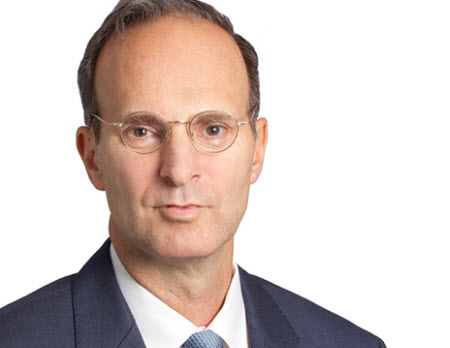Production Profits Now Power VOD Leaders

TV production, long hoped to be the antidote for falling ratings and affiliate fees at cable networks, is expected to grow strongly in the next several years, fueled by an unlikely ally — subscription video-on-demand providers.
SVOD companies such as Netflix, Amazon and Hulu are expected to significantly increase their spending on content this year. According to Morgan Stanley media analyst Ben Swinburne, SVOD firms will spend $15 billion in 2017, up from less than $4 billion in 2012 and led by Netflix ($6 billion), Amazon ($4 billion) and Hulu ($3 billion).
THE PRODUCTION ISSUE > Cover Story: John Landgraf's Legion of Hits | Content: Family Business Expands Its Tool Set | Viewpoint: What Comes After Networks? Neo-Studios | Through the Wire: ITN Plotting British Invasion Into U.S. Production Market
TV production revenue is a welcome addition as affiliate fees and advertising revenue continues to be under pressure, Telsey Advisory Group media analyst Tom Eagan said. “The better media companies are able to harness studio production.”
TV production has long been the decidedly less glamorous cousin of overall studio revenue, Eagan said. But in recent years, as movie budgets have escalated and box-office receipts have dwindled, TV production has gained in stature and sales.
The big content providers rarely break out specific numbers for TV production, but most said it has become a significant, and growing, part of the overall revenue haul.
Supply for Demand
Fueling that growth is the nearly insatiable appetite of broadcast, cable and now SVOD distributors, for scripted programming. Most programmers are clamoring to meet the demand.
In May, AMC Networks announced a deal with Charter Communications where it would develop and co-produce exclusive content for the cable operator within a specific window.
At its first-quarter earnings conference call shortly after the deal was announced, AMC Networks CEO Josh Sapan said he wasn’t sure whether that deal would lead to others like it, but added that it allows for the expansion of its AMC Studios operation.
Sapan has long been a proponent of owning the content the company’s networks air — AMC Studios produces several shows for its networks including The Walking Dead, Turn: Washington’s Spies and Fear the Walking Dead. But AMC is now seeing the studio as a source of revenue for shows outside of its networks.
“It’s a significantly growing part of our top line, and so we think that being a studio and TV producer will make us important for this ecosystem domestically, both satellite, cable, telco and emerging [multichannel video programming distributors],” Sapan said on AMC’s first-quarter earnings call in May.
Others are seeing the light too. Viacom CEO Bob Bakish touted his Paramount TV Studios deal with Netflix for the show 13 Reasons Why, which has become a social media phenomenon.
Viacom launched its Paramount Television production unit in 2014 and has already exceeded its target of one drama and two comedies on-air within three years. The studio is in production for season two of Berlin Station (Epix) and Shooter (USA Network) and for season three of School of Rock (Nickelodeon) and season three and four for Bajillion Dollar Propertie$ (Seeso). It also is currently in production on The Alienist for TNT and Tom Clancy’s Jack Ryan for Amazon. In the summer, shooting begins for Netflix series Maniac and in the fall for Netflix’s The Hunting.
“Having a successful TV production business attached to the studio provides helpful consistency in cash flows, and I believe it is fundamental to the success of the studio,” Bakish said on the call. “And let’s not forget that this is a low capital-intensive business. We see considerable value here going forward.”
The Price for Rights
In a recent research note, Swinburne pointed to Hulu’s purchase of streaming rights with NBC for the 20th Century Fox Television-produced hit This is Us for an estimated record $2 million to $4 million per episode as a sign of the changing times. That deal, he wrote, “highlights the new reality that the largest syndication dollars are now from SVOD, dwarfing what TV networks/stations are paying.”
Netflix, for example, paid an estimated $1.75 million per episode for Gotham and $2 million per episode for The Blacklist in 2014, records at the time.
“For TV studios, digital dollars now dwarf TV pennies,” Swinburne wrote, adding that combined licensing fees for digital and traditional platforms for syndicated shows is now in the $2 million-per-episode range, at or slightly ahead of historical levels.
But traditional TV’s portion of that average is dwindling. Recent off-network syndication deals for Brooklyn Nine-Nine ($500,000 per episode to TBS) and Black-ish ($800,000 per episode to FX and BET) are a fraction of what they were in the past. For example, TNT purchased Hawaii Five-0 from CBS in 2011 for $2 million per episode.
Broadcast networks plan to air more than 100 scripted series next season, Swinburne noted, and the studios behind those shows will most likely generate more revenue from back-end licensing from SVOD companies than from TV networks.
Eagan isn’t so sure that SVOD licensing will surpass TV network revenue, but said it could be close.
“While we saw viewership and ad dollar substitution for licensing, I don’t think you’ll see the same kind of substitution here,” Eagan said. “It’s probably net-net, but it’s still additive. Is it additive for the company itself? Probably yes.”
Multichannel Newsletter
The smarter way to stay on top of the multichannel video marketplace. Sign up below.
